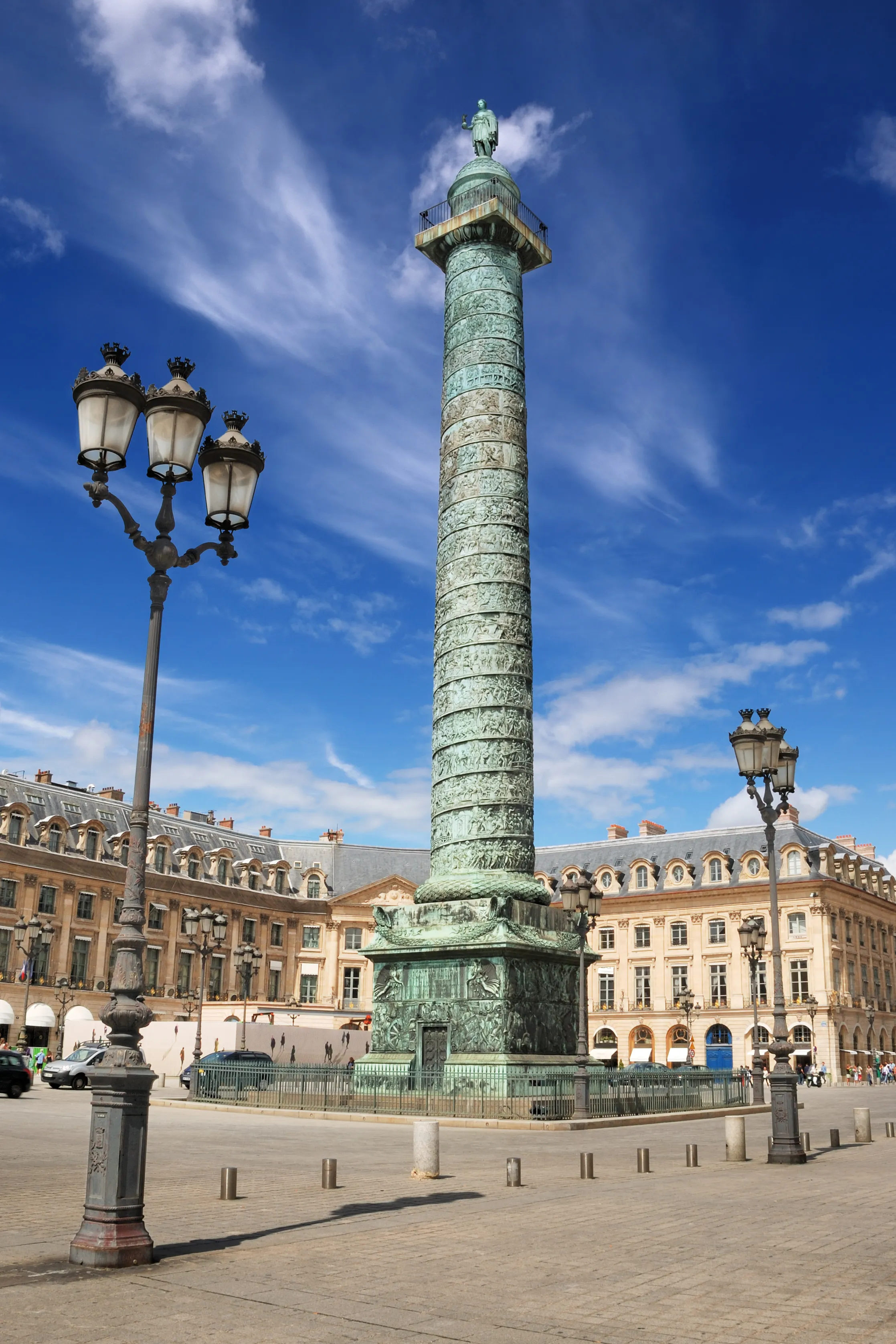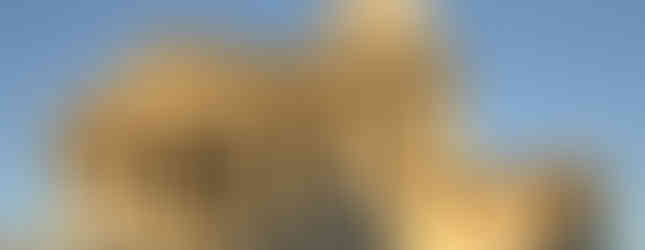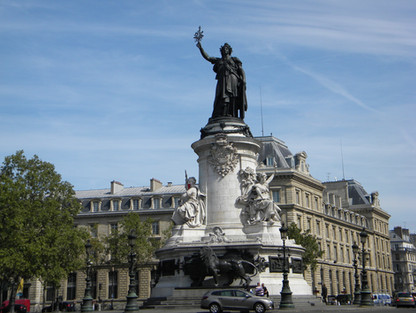Walking tour of the 20 "Arrondissements" of Paris
- Manon Dewitte
- May 17, 2023
- 11 min read
Updated: Oct 25, 2023
Paris is divided into 20 "arrondissements". These are administrative divisions that allow for better organization and management of each area of the capital. Take a stroll through the different arrondissements of Paris and discover their distinctive features! Ideal for preparing a trip...
The origin of the "arrondissements"
The capital of France, is divided into 20 arrondissements (pronounced /arondisman/) - that are districts - to better organize the city's management and facilitate communication between the different neighborhoods. The organization into 20 arrondissements dates back to 1795, when the French Revolution abolished the old system of "parishes". This new division was designed to be more practical and more consistent with the new administrative map. The population of Paris has increased considerably since then and the system of the 20 arrondissements is still in force today. The arrondissements of Paris are organized in a snail shape due to the history of the city. The city of Paris developed around the island of the "Cité" (Île de la Cité), and each arrondissement is located along the banks of the Seine. The spiral shape of the arrondissements reflects the growth of the city and the movement of the Seine through the city.

To name the arrondissements, ordinal numbers are used: premier (1er), deuxième (2ᵉ), troisième (3ᵉ), quatrième (4ᵉ), cinquième (5ᵉ), sixième (6ᵉ), septième (7ᵉ), huitième (8ᵉ), neuvième (9ᵉ), dixième (10ᵉ), onzième (11ᵉ), douzième (12ᵉ), treizième (13ᵉ), quatorzième (14ᵉ), quinzième (15ᵉ), seizième (16ᵉ), dix-septième (17ᵉ), dix-huitième (18ᵉ), dix-neuvième (19ᵉ) and vingtième (20ᵉ).
The 2 banks of Paris
The arrondissements south of the Seine are located on the "left bank" and those to the north are on the "right bank". Let's go through the 20 arrondissements of the French capital together! I have prepared a list of the most emblematic monuments of the City of Light ("la Ville Lumière"). 💫
1st arrondissement
The 1st arrondissement is one of the most central arrondissements of the capital, at the heart of the historic city center. It is home to many famous monuments such as:
- Place Vendôme: a famous square for its historical buildings, luxury shops (especially jewelry) and chic restaurants. It is easy to recognize with its large bronze column.
- Tuileries Garden: an open green space along the Palais des Tuileries, offering views of the Eiffel Tower and the Champs-Élysées avenue.
- Louvre museum: the world's largest museum, housing masterpieces from the Renaissance and Antiquity.
- Palais-Royal: a cultural and historical complex, housing art galleries, shops and restaurants.- The Sainte-Chapelle: opened in 1248, it is a gem of Gothic art with its 600 sqm of stained glass windows to discover.
- Conciergerie: a former palace of justice and prison located to the west of the Île de la Cité, under the present-day "Palais de Justice". It was originally part of the old royal palace, the Palais de la Cité, which also included the Sainte-Chapelle.
2nd arrondissement
The 2nd arrondissement is also rich in historical heritage. Don't miss:
- Galerie Vivienne, probably the most beautiful in Paris. It is a passage connecting two streets (there are many in the capital). Built in 1823, according to the plans of the architect François-Jean Delannoy, the Galerie Vivienne measures 176 meters in length. Go for a walk to discover its beautiful mosaic floor as well as its varied and original shops.
There are many other passages, such as those of the Panoramas or of the Grand-Cerf.
- Palais Brongniart, former Palais de la Bourse
- If you were thinking of going to the movies in Paris, the Grand Rex cinema is a mythical cinema in Paris.
3rd arrondissement
- The Carnavalet Museum: this free museum built in an old private residence traces the history of Paris from its origins to the present day.
- The Museum of Arts and Crafts ("Musée des Arts et Métiers"): Explore the history of science and technology.

4th arrondissement
Travel through the years and take the time to visit:
- Notre-Dame Cathedral: a famous Catholic church of Gothic style, located on the Île de la Cité. It suffered a fire in 2019 and is currently closed for renovation until 2024.
- Pompidou Centre: located in the Beaubourg district, this museum of modern art was inaugurated in 1977 by the President of the Republic at the time, Georges Pompidou.
- Paris City Hall: the building that has hosted the municipal institutions of Paris since 1357!
- "Le Marais" district: shopping, culture, history, gastronomy, nightlife... This very lively district (emblematic of the LGBT community 🏳️🌈) offers you a large number of activities!
- Place des Vosges: former royal square, one of the oldest in Paris. Stroll under the arcades and in the garden alleys.
- Place de la Bastille: a symbolic place of the French Revolution since it was on this square that the old Bastille fortress was taken by the French people on July 14, 1789. Today, you can observe the July Column.
5th arrondissement
Nicknamed "the Latin Quarter" (Le Quartier Latin), the 5th arrondissement of Paris is also one of the oldest districts of Paris, at the heart of its historic center.
- The Pantheon: Formerly the Sainte-Geneviève Church, this monument has been dedicated - since the French Revolution - to honoring great figures who have marked the history of France. Among them are Voltaire, Jean-Jacques Rousseau, Victor Hugo, Louis Braille, Sadi Carnot, Émile Zola... It is worth noting that military personnel are not interred at the Pantheon but at the Hôtel des Invalides (7th arrondissement).
- The Great Mosque of Paris ("La Grande Mosquée de Paris"): The oldest mosque in France can be visited every day of the week except Fridays and during Muslim religious holidays. Inspired by the Alhambra of Granada, the patio is surrounded by sculpted arcades. The prayer hall is a must-see for its decoration and its magnificent carpets. The Mosque of Paris is also a place of relaxation with its hammam, its restaurant, its tea room and its souk-like boutique.
- The Sorbonne University: One of the oldest French universities (the first building was built in 1253!) but also one of the most renowned.
- The Cluny Museum: the only museum in France dedicated to the Middle Ages. You can admire the famous tapestries of the Lady with the Unicorn.
- The Institute of the Arab World: a French cultural institute dedicated to the Arab world. Its objective is to show the public the diversity of this culture. The modern glass building was designed by the famous architect Jean Nouvel. Don't miss the view from the roof where you can stop for a drink and enjoy the view of the capital!
- The Museum of Natural History: Founded in 1793, it is one of the oldest establishments of its kind in the world. Take a fascinating journey into the heart of the living world. The Evolution Gallery is impressive!
6th arrondissement
The 6th arrondissement is one of the most beautiful neighborhoods of Paris! Located on the Left Bank, it is a rather quiet neighborhood yet close to iconic places, making it one of the most expensive in the capital. You have to go there to visit:
- Jardins du Luxembourg: a family garden where you can walk, exercise, or enjoy the splashing of the beautiful Medici Fountain…
- Saint-Germain des Prés district: The chic Saint-Germain-des-Prés district includes elegant shops, restaurants, and the medieval church of Saint-Germain-des-Prés, the oldest in Paris. Booksellers installed on the sidewalks sell old titles on the banks of the Seine, while Boulevard Saint-Germain attracts literature lovers to iconic cafes such as the Café de Flore, once frequented by writers such as Hemingway, or the Deux Magots.
7th arrondissement
- The Orsay Museum: a museum dedicated to western art of the 19th century. The museum holds a great deal of the most beautiful impressionist paintings, such as the famous Lunch on the Grass by Edouard Manet, The Origin of the World by Gustave Courbet, and Self-Portrait by Vincent Van Gogh. Allow half a day to visit the entire museum.
- The Eiffel Tower: how to talk about Paris without mentioning the most famous attraction of Paris located on the Champ de Mars? You can take a simple photo at the foot of the Eiffel Tower or climb up to the 2nd floor to admire the view. The more sporty can even climb on foot (there are precisely 674 steps to climb!). In total, there are 1665 steps from the esplanade to the top of the Eiffel Tower, but the stairs between the 2nd floor and the summit are not open to the public.
- L'Hôtel des Invalides: Recognizable in the Parisian landscape thanks to the gilding of its famous Dome, the Hôtel national des Invalides is an exceptional monument. Visitors can explore the History of France through the collections of the Army Museum and the tomb of Napoleon I.
- Rodin Museum: The museum dedicated to the life and work of the famous sculptor Auguste Rodin. The museum is located in the Hôtel Biron, at the request of the artist. Stroll through the beautiful private mansion but also through the alleys of the garden to admire the sculptures (and in particular the famous Thinker - "Le Penseur").
8th arrondissement
We are back on the right bank, in the chic 8th arrondissement. It is also home to some of the most iconic Parisian places such as:
- Arc de Triomphe: a commemorative monument built in honor of Napoleon's victories. It is located at the end of the Champs-Élysées Avenue.
- The Champs-Élysées Avenue: one of the most famous avenues in the world, housing luxury boutiques, restaurants, and cinemas.
- Place de la Concorde: known for its central obelisk.
- The Grand Palais and the Petit Palais: The Grand Palais was built from 1897 for the Universal Exposition planned from April 15 to November 12, 1900. It is particularly famous for its beautiful glass roof.
The Petit Palais is located right across from the Grand Palais. It houses the Museum of Fine Arts ("Le Musée des Beaux-Arts"). Entry to the permanent exhibition is free.
- The Élysée Palace: This is the official residence of the President of the Republic. You can only see the Palace from the outside (through the gate), but you can visit it for free during the Heritage Days which take place the third weekend of September. Otherwise, you can also take a virtual guided tour on the official website of the Élysée Palace!
- The Alexandre III Bridge crosses the Seine between the 7th and 8th districts. It is located between the Pont de la Concorde and the Pont des Invalides.
- The Parc Monceau: A peaceful and romantic park frequented by Parisians and tourists alike. Play areas for children are available. Be sure to admire the beautiful Corinthian columns.
9th arrondissement
- The Galeries Lafayette: the paradise of shopping! This department store has existed since 1893. It is the ideal place to find clothes, shoes or accessories from the biggest brands (French or not) but also food products, items for the home, games and toys... If you don't want to buy anything, you should at least go in to see the magnificent glass dome. Also think about going up to the rooftop where you will have a superb view of the Opéra Garnier.
- The Grévin Museum: A wax museum (like Madame Thussaud's) where about 250 reproductions of famous personalities are exhibited.
- The Palais Garnier (or "Opéra Garnier") is a major element of the heritage of the 9th arrondissement of Paris and the capital. It was built in 1861.
10th arrondissement
- The Canal Saint-Martin: a 4.55 km long canal, originally created to bring drinking water to Paris. Today, one can stroll along the waterside and also take a boat ride.
- Place de la République: It is actually located at the boundaries of the 3rd, 10th and 11th arrondissements. This square is known for its large commemorative monument and its central fountain. The square is an important symbol of the city, representing freedom, equality and fraternity (the motto of France).
11th arrondissement
The 11th district is a very young neighbourhood, there are many restaurants to enjoy a good dinner like Brasserie Martin.
💡 Enjoy the view on the roofs of Paris and (if it is sunny) a sunset over the capital while drinking a glass on the rooftop of Perchoir Menilmontant.
If you pass by the 11th, don't miss the beautiful Atelier des Lumières! Created in 2018 in a former foundry (= a place that manufactures metal objects), this cultural space is somewhat atypical since the concept is to present the exhibitions by projecting them on the walls with a game of sound and light.
12th and 13th arrondissements
The 12th and 13th arrondissements of Paris are not the best known or most touristy, but you can wander around to discover the omnipresent street art in the neighborhood. You can even find guided tours.
The 13th also houses the Buttes aux Cailles swimming pool, an Art Deco style pool built between 1922 and 1924, and with an outdoor pool for sunny days!
Fashion lover? The City of Fashion and Design ("La Cité de la Mode et du Design") is waiting for you. Located on the banks of the Seine, the site is recognizable by its bright green and ultra contemporary exterior structure. It devotes its spaces to the avant-garde of fashion and design. Enjoy the view in one of the cafes/restaurants.
14th arrondissement
This district of the south of the capital is also quite unknown. People come here to enter the famous catacombs. 😱It is a real underground labyrinth which is in fact the largest ossuary in the world and which houses the bones of millions of Parisians!A part of the catacombs has been open to the public since 1809: you can descend to 20 meters deep and visit 1500 meters of gallery.
15th arrondissement
- Ideally located right across from the Eiffel Tower, go for a walk in the André-Citroën Park and you will discover a miniature version of the Statue of Liberty! Admire the clear view of the Eiffel Tower.
- The Montparnasse Tower: the highest skyscraper in Paris, located in the Necker district with a height of 209 m. For 40 years, it was the tallest building in France until the construction of the First Tower in La Défense. You can climb to the 56th and last floor of the Montparnasse Tower where there is an observatory with an unparalleled view of the entire capital!
16th arrondissement
The very chic 16th district is home to the Louis Vuitton Foundation, located in the Bois de Boulogne, as well as many museums such as the Palais de Tokyo (modern art), the Musée Clémenceau (house where politician Georges Clémenceau lived from 1896 to 1929), the Musée Yves Saint Laurent and many others: the 16th is the arrondissement with the highest concentration of museums in the entire capital!
If your time is limited, I recommend the Maison de Balzac: one of the residences of the writer Honoré de Balzac and where he wrote The Human Condition. The museum presents, among other things, personal souvenirs of the writer and his family, as well as numerous original editions, manuscripts and illustrations. As a bonus: a magnificent view of the Eiffel Tower.
17th arrondissement
The 17th is a trendy and 'bobo' (meaning "bourgeois bohème") neighborhood today. People go there for:
- The Batignolles district, formerly a village located in the forest, was cleared and built from the 19th century. It was only attached to the city of Paris in 1860. Today it is a "village" neighborhood where Parisians and tourists share the terraces of traditional bistros and cafés.
- The Jean-Jacques Henner National Museum dedicated to the work of the painter
- Place de Clichy and its many bars and restaurants.
18th arrondissement
The 18th is certainly one of the most well-known, vibrant, cosmopolitan neighborhoods of Paris, and perhaps the most "clichéd" Parisian one. It houses the capital's unmissable monuments:
- The famous Montmartre district: climb the 222 steps leading to the Sacré-Cœur Basilica and enjoy the breathtaking view of Paris. The Place du Tertre (at the top of the Montmartre hill) and its surroundings look like the square of a small village. It is famous for its painters. It is one of the most visited places in the capital, so don't expect to walk alone because it is always invaded by tourists!
- The Wall of Love❤️: Paris is the city of love, isn't it? On this 40 m2 wall, the phrase "I love you" is written in 250 languages.
- The "hot" Pigalle district and the famous Moulin Rouge cabaret
19th arrondissement
Located north of Paris, you should go to the 19th arrondissement to:
- Relax at the Parc des Buttes-Chaumont, the steepest and one of the largest parks in Paris, inaugurated in 1867. A "mountain" atmosphere in the heart of the capital with its lake and waterfalls!
- The Parc de la Villette: another large park for walking or resting, but also for attending events such as concerts or festivals.
Le 20ᵉ arrondissement
We end with the 20th arrondissement, where a relaxed and bohemian atmosphere reigns. It is located in the former industrial heart of Paris. It is a very "green" arrondissement so don't miss:
- The Père-Lachaise Cemetery where celebrities from all walks of life such as Dalida, Jim Morrison, Frédéric Chopin, Molière, Honoré de Balzac, Édith Piaf...rest. An unusual visit.
- The Belleville Park and the view from its summit.
Bon voyage!
I hope this article will help you prepare your trip to the French capital 🇫🇷
France is one of those countries where it is necessary to speak the local language to "survive" and optimize your trip! To be even better prepared, think about booking some French courses to learn (or review) the basics of the French language and make the most of your trip.
Individual lessons or small group courses, booking is done online in a few clicks. À bientôt!
.png)

























































































































